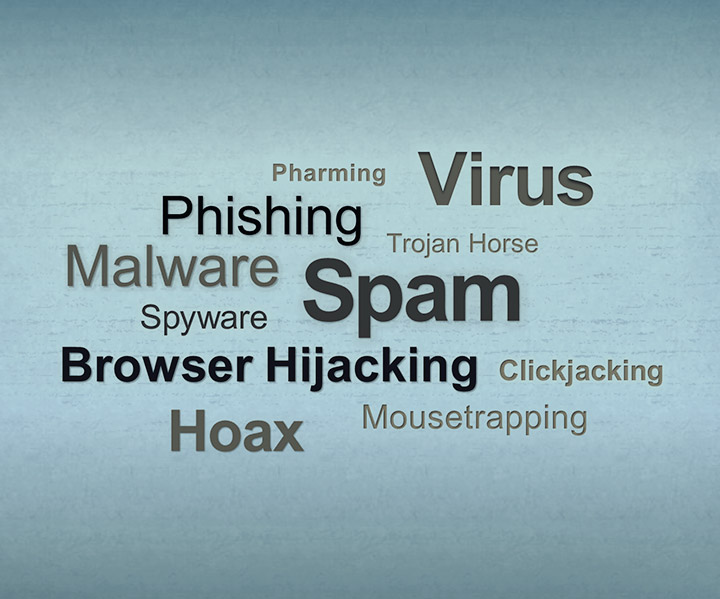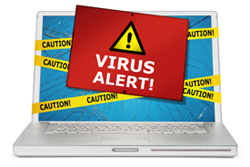Internet Safety
Introduction to Internet Safety
Understanding Internet threats
Before we can learn how to protect ourselves, we need to understand what the threats are on the Internet. Click the buttons in the interactive below to learn common Internet safety terms that pertain to our computers and identity theft.

Pharming
Pharming is a technique used to redirect a legitimate website's traffic to another illegitimate website in order to gain access to a user's personal information.
Mousetrapping
Mousetrapping keeps visitors from leaving a website by locking them into a window, opening multiple windows on the desktop, or relaunching their website in a window that can't be closed.
Hoax
A hoax is an email chain letter that warns of impending viruses and tries to scare users into forwarding and continuing the hoax email.
Browser Hijacking
Browser hijacking occurs when malware or spyware replaces your browser's home page with its own in order to force more hits to a particular website.
Clickjacking
Clickjacking is a technique that tricks users into clicking on a malicious link by adding the link to a transparent layer over what appears to be a legitimate web page.
Users think they are clicking on buttons or links in the legitimate page, when in reality they are clicking on the concealed links in the hidden page and often providing access to confidential information in the process.
Spyware
Spyware is a type of malware that collects information about users without their knowledge, often to track browsing habits and to create pop-up advertisements. Along with invading your privacy, it can sometimes interfere with a computer's functions.
Spyware is sometimes bundled with other software. Before downloading software, it's a good idea to read the reviews to see if it has a good reputation.
Spam
Spam is unsolicited email or junk mail. Sometimes, it comes from legitimate companies, but it can also be used for scams, phishing, and malware.

Malware
Malware is intentionally malicious software or code that is designed to damage your computer or collect information without your knowledge.
Viruses, Trojan horses, worms, spyware and keystroke-logging snoopware are all considered malware. Sometimes adware and freeware can be malicious.
Trojan Horse
A Trojan horse is a type of malware that appears to be benign or desirable and thus tricks the user into allowing the program access to their computer, usually through a download or email attachment.

Phishing
Phishing is mail or instant message scams that are disguised to look like official communications from a legitimate website. They fool users into providing sensitive information like passwords, credit card details, etc.

Virus
A virus is a self-replicating program that is designed to infect a computer by rapidly spreading from one file to another, sometimes causing great harm.
*Worms are similar, except they are usually spread over a network without human help.
For the latest Internet terms and text and chat acronyms, visit NetLingo.com.






